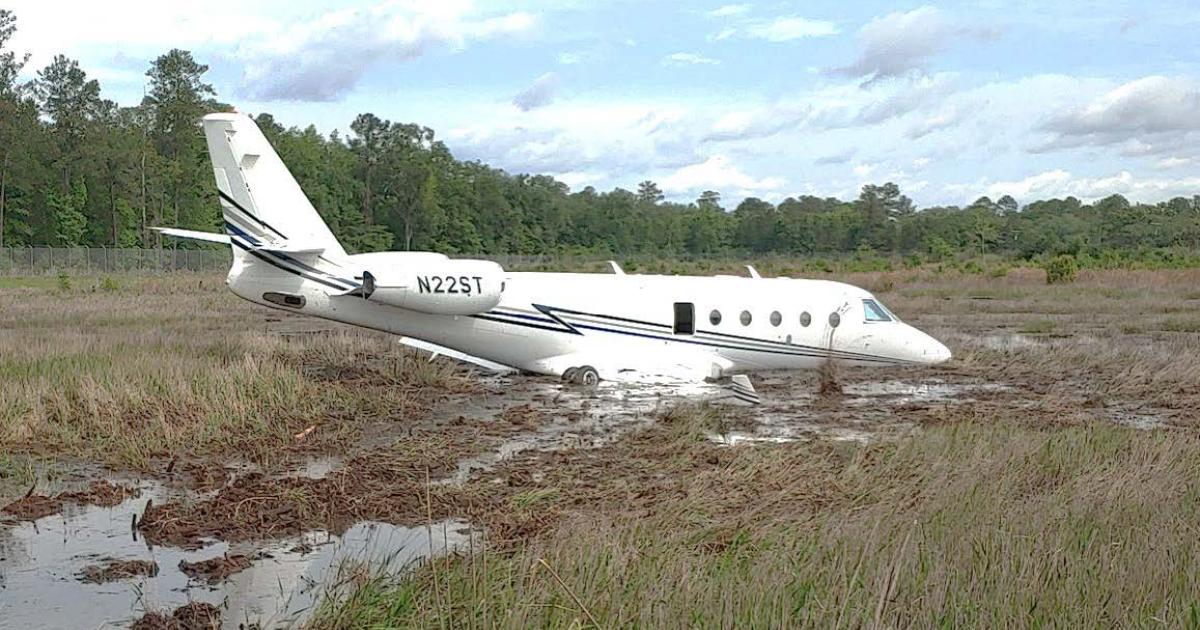Why Teaching Common Sense During Pilot Training Matters
Experience in professional pilot training primarily focuses on procedures, limitations, emergencies, and aircraft systems for safety purposes. However, there is a shocking example of airmanship negligence that occurred in May 2021. A Gulfstream G150 flight crew overran a runway at Ridgeland Claude Dean Airport in South Carolina. Despite the runway being only 4200 feet long, unforeseeable circumstances were not the cause of the accident. The crew was actually racing another aircraft to the destination airport, akin to two teenagers competing for a parking spot. This reckless behavior was captured on the CVR, and it all began when a passenger asked about the ETA, which the pilot interpreted as a challenge. They noticed another jet would touch down first, sparking their determination to win the race.
Throughout the descent, the crew continuously referenced the race, even when the aircraft systems warned them of excessive speed. This warning was misconstrued as a sign of success. Despite one crew member suggesting S-turns, indicating doubts about the plan, the captain declined. Their landing speed should have been 121 knots, but they were indicating 170 knots approximately 1.5 NM from the runway. Adding full flaps caused the sink rate warning to activate, with the SIC calling out 150 knots at around 200 feet AGL. Touching down at approximately 130 knots, they only had 1200 feet left of the runway.
Realizing they weren’t slowing down, both pilots engaged the brakes, but they still slid off the end of the runway and came to a stop 400 feet into wet and marshy terrain. Although the aircraft sustained substantial damage, fortunately, no injuries occurred. Initially, the pilots claimed they had no brakes or thrust reversers, but video footage proved otherwise. It’s worth noting that there was also a quartering tailwind present.

Why Common Sense During Flight is Necessary
Using common sense in conjunction with procedures and policies is crucial for pilots to ensure safe and efficient flight operations. Here are a few reasons why:
- Decision Making: Common sense assists in making sound judgments during critical situations. For instance, if a pilot detects an unusual engine noise but the instruments indicate normal readings, it’s sensible to trust instincts and perform additional checks.
- Risk Management: Procedures cover standard scenarios, but unpredictable situations can occur. Common sense helps pilots assess risks effectively. For example, if the weather conditions seem too risky for takeoff despite clearance, a pilot should use his discretion to delay the flight.
- Emergency Situations: During emergencies, reliance on procedures alone isn’t sufficient. Quick thinking and common sense are vital. Consider Captain Sully’s decision to land his Airbus A320 on the Hudson River; despite procedure, he made a judgment call that saved lives.
- Communication: Clear and concise communication is key in aviation. Common sense guides what to communicate, ensuring relevant information is relayed at the right time.
- Efficiency: Strict adherence to procedure can sometimes lead to inefficiency. Pilots can use common sense to streamline operations, such as requesting a different taxi route to save fuel and time.
- Teamwork: Pilots work with a team that includes co-pilots, cabin crew, ground staff, and air traffic controllers. Common sense can improve teamwork and coordination by understanding human factors.
- Understanding Limits: Every aircraft has limitations. A sensible pilot understands these and avoids pushing them. For example, even if a Boeing 737 could technically land on a short runway, it’s safer to opt for a longer one.
- Preparation: Thorough preparation for each flight is required, considering factors like weather, route, and aircraft condition. Common sense plays a key role in this process, ensuring nothing significant is overlooked.
- Respecting Regulations: While regulations are meant to be followed, there might be times when common sense dictates otherwise. For instance, an emergency landing may necessitate bypassing certain rules for the greater good.
- Continuous Learning: Aviation is a field that continually evolves. Common sense helps pilots understand when to seek additional knowledge or training.
Regarding specific aircraft models, each has unique characteristics that pilots need to understand fully. Using common sense here would mean understanding the aircraft’s behavior and trusting its systems, even if they behave differently from what a pilot is used to.










